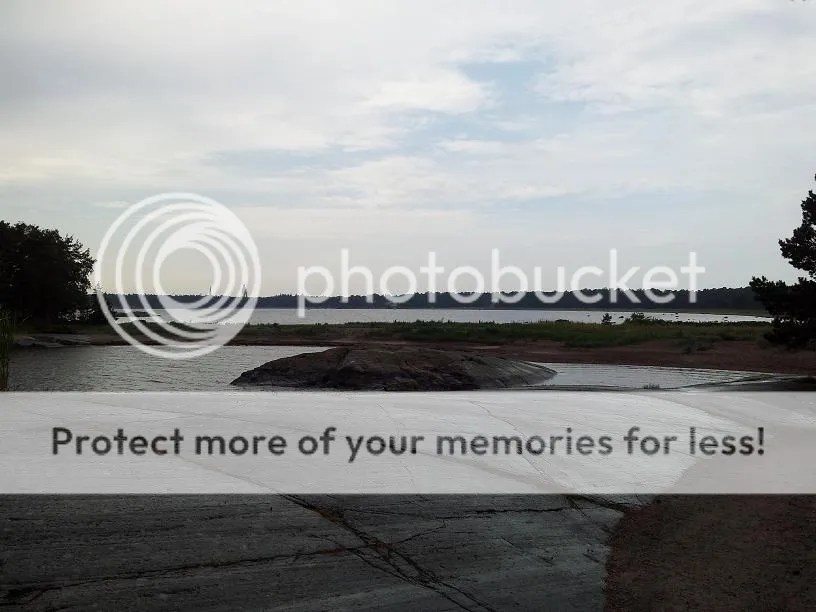Last Sunday, I was fortunate enough to spend 8 hours hiking, fishing, cooking and just plain loafing around with OZme from Bush n’ Blade. We met at the Pukala recreational forest near the town of Orivesi, Finland. This 12 sq. km/4.6 sq. mile forest has been set aside both by the local government and private landowners as a place where the public can hike, fish, swim, camp, cook, pick berries and mushrooms and more.
After a few delays and then 2 1/2 hours on the road, I reached the parking area where we agreed to meet. OZme had been to this area several times before and had offered to show me around. We started hiking a 6.5 km/4 mile loop trail from the parking area. Along the way, we saw this strange creature, which I think is the result of aspen roots growing up out of the ground and over a tree stump which has since rotted away. Weird!


We ate a few bilberries along the way and also collected chanterelle mushrooms (cantharellus cibarius) and others to eat later on. When we got to the laavu on the lake shore, OZme was more than ready for a dip in the lake. He assured me it was refreshing. 🙂



I was too hungry to think about anything but eating, so I ate a small sandwich right away. After swimming a bit and then eating a ball of rice and vegetables wrapped in seaweed, which is a traditional Japanese backpacking food, OZme prepared tinder, kindling and fuel wood for a cooking fire. I might have split a log or two as well.





Recognize these?

Once the fire was going, my friend handed me a gift which I was happy to receive: a very clever alcohol-burning stove of his own design (check out his video). There’s no doubt that this stove will become a permanent part of my regular gear. It’ll be perfect for making quick trail-side tea, coffee, soup etc. Thanks, OZme!


He then used pork, carrots, the chanterelle mushrooms and miso paste to make the best miso soup I’ve had, by far. I was also offered a rice ball, which I readily accepted. I have to say, I very much enjoyed both of these Japanese trail treats, which were a welcome change from my staple outdoor foods. Once again, thank-you. 🙂







I offered to clean up the dirty pots using a spruce brush he made, along with ashes from the fire. The fat from the pork and ashes from the fire together form an effective soap.


After our meal came dessert: Oogling knives, axes, fishing kits, natural cordage and other gear and crafts and drinking some coffee from our kuksas (wooden cups). By this point, the sun was lower in the sky, shining right into the laavu, so it was a perfect opportunity to stretch back, lean against our packs and converse. OZme is very easily to get along with and an interesting guy as well.
Shortly after 8 o’clock, we decided to extinguish the last of the coals smoldering in the fireplace and do a little evening fishing. OZ caught a decent-sized small perch with his hand-made hand-line kit after just a few casts, but I wasn’t as lucky with mine. I think I’ve been spoiled by the plethora of fish available in the lake at my mother-in-law’s cabin, because this “not catching fish at other lakes” thing is starting to annoy me. 😉

When we were done fishing, we packed up our gear and hit the trail again. OZ picked some bilberries along the way.

We hiked for about 50 minutes and completed the rest of the loop trail, which took us back to the parking area. It was 10 p.m. on the dot. Our timing couldn’t have been better, as it started raining just a few minutes after reaching our destination and continued for at least the first hour of my drive home. Luck was on our side. 🙂 We quickly parted ways and headed to our respective homes, already looking forward to the next trip. It’s tough to say when that next meetup will be, as OZme will have his hands full for a while (I’ll leave it to him to tell you why). If he is able to sneak out for a moment from time to time for some woods running, he knows how to reach me.




















































